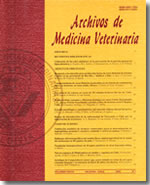Methods of oestrus prevention in dogs and cats: a survey of Turkish veterinarian's practices and beliefs
Main Article Content
Abstract
Three-hundred and two private practitioners working in Istanbul, Ankara and Bursa and 35 faculty members of veterinary medical schools of Istanbul, Ankara and Uludag (Bursa) were surveyed by a face-to-face interview to investigate the attitudes of Turkish veterinarians towards the methods used for oestrus prevention in dogs and cats, surgical techniques for sterilization, the age at which animals were spayed and the suture materials used in surgeries. Most of the veterinarians (60.4%) favored surgical contraception in dogs and cats and ovariohysterectomy was determined to be the most common surgical technique (97%). In dogs, compared with the specialists, practitioners performed surgical sterilization after one year of age (P < 0.001). However, in cats, compared with practitioners, specialists preferred to perform the surgery after one year of age (9.8% vs. 25.9%). For surgical sterilization, ventral midline approach was more common in dogs (85%) whereas in cats flank approach was preferred (65%). Medroxyprogesterone acetate was the primary drug of choice for medical contraception (68.8%) and 24% of the veterinarians considered using non-veterinary licensed drugs for the prevention of oestrus in dogs and cats.

